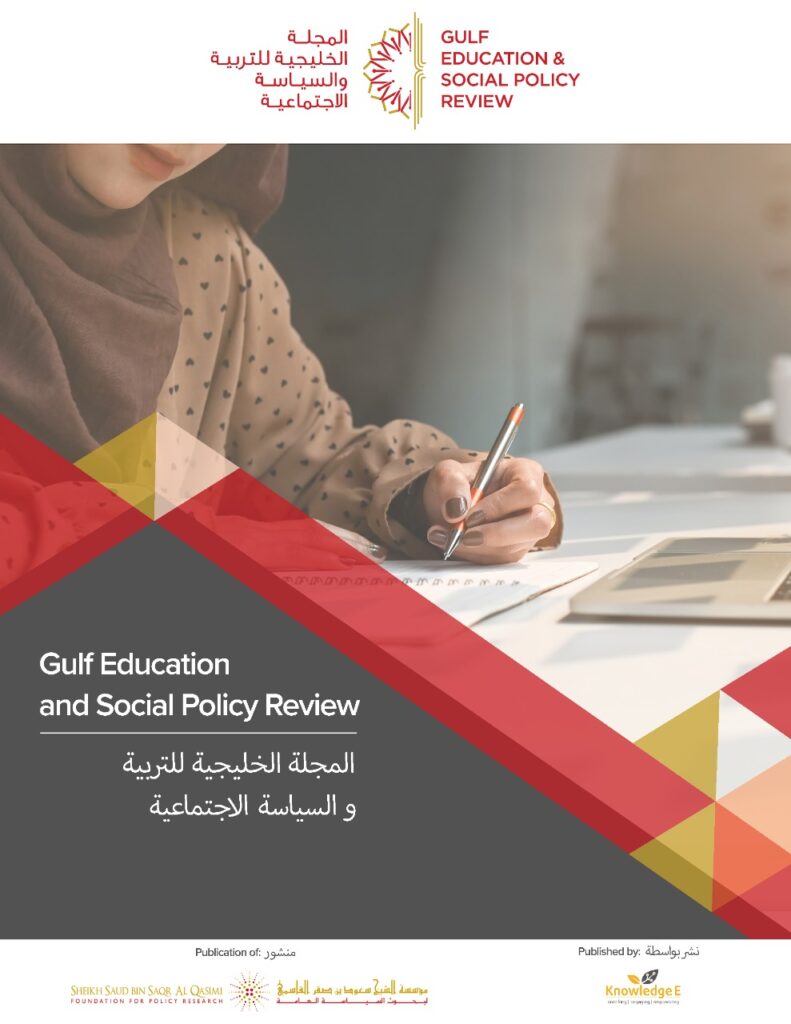
Gulf Education and Social Policy Review
ISSN: 2709-0191
Pioneering research on education and social policy in the Gulf region.
Internationalizing the National University
Published date:Jul 28 2023
Journal Title: Gulf Education and Social Policy Review
Issue title: Gulf Education and Social Policy Review (GESPR): Volume 4, Issue 1
Pages:56 – 75
Authors:
Abstract:
This article, which is a translated excerpt from the book Degrees of Dignity: Arab Higher Education in the Global Era, focuses on internationalization of higher education in the Arab Middle East and North Africa. It puts recent transformations in Gulf countries in perspective historically and regionally. The chapter discusses how trends towards internationalization are affecting higher education systems in the region, through both international student mobility, campus partnerships and branch campuses. The article argues that internationalization efforts can are popular to the extent that they create more opportunities for youth, but can also be problematic when they are limited to an elite few or are exclusively oriented towards the West.
References:
[1] Altbach, P. G. (Ed.). (2013). The international imperative in higher education. Springer Science & Business Media.
[2] Anderson, N. (2015, December 6). In Qatar’s Education City, U.S. colleges are building an academic oasis. The Washington Post https://www.washingtonpost.com/local/education/in-qatars-education-city-uscolleges- are-building-an-academic-oasis/2015/12/06/6b538702-8e01-11e5-ae1faf46b7df8483_ story.html
[3] Azevedo, J. P. (2011). WBopendata: Stata module to access World Bank databases, Statistical Software Components S457234. Boston, MA: Boston College Department of Economics. http://ideas.repec.org/c/boc/bocode/s457234.html
[4] Badran, S., & Badran, A. (2018). Who pays what for public & private university education in the Arab region compared with the rest of the world: Context of Jordan. In Universities in Arab countries: An urgent need for change (pp. 225–248). Cham, Switzerland: Springer International Publishing AG.
[5] Cross-Border Education Research Team (C-BERT). Branch campus listing. [Data originally collected by Kevin Kinser and Jason E. Lane]. http://cbert.org/branchcampuses.php
[6] Donn, G., & Al Manthri, Y. (2010). Globalisation and higher education in the Arab Gulf States. Symposium Books Ltd.
[7] European Union (EU). (2016). Battuta Project. Building academic ties towards universities through training activities. https://www.battuta.eu/general_information?lang=en
[8] Farag, I. (2010). Going international: The politics of educational reform in Egypt. In World Yearbook of Education 2010 (pp. 285–299). Routledge.
[9] Hannova, D. (2014). Arab students inside the Soviet bloc: A case study on Czechoslovakia during the 1950s and 60s. European Scientific Journal, 2.
[10] Hénard, F., Diamond, L., & Roseveare, D. (2012). Approaches to internationalisation and their implications for strategic management and institutional practice. Paris, France: OECD.
[11] Hvidt, M. (2015). The state and the knowledge economy in the Gulf: Structural and motivational challenges. The Muslim World, 105(1), 24–45.
[12] JACEE ( Jordanian–American Commission for Educational Exchange). (n.d.) Jordanian Fulbright foreign student scholarship [Master’s thesis]. https://www.fulbrightjordan. org/
[13] Katsakioris, C. (2016). Les étudiants de pays arabes formés en union soviétique pendant la Guerre froide (1956–1991). Revue Européenne des Migrations Internationales, 32(2), 13–38.
[14] Kayyali, L. (2016). Branch campus and national development: The case of Georgetown University in Qatar [Unpublished thesis, Teachers’ College, Columbia University].
[15] Knight, J. (2004). Internationalization remodeled: Definition, approaches, and rationales. Journal of studies in international education, 8(1), 5–31.
[16] Knight, J. (2008). Higher education in turmoil. The Changing World of Internationalisation. Rotterdam, The Netherlands: Sense Publishers.
[17] Knowledge and Human Development Authority (KHDA). (2017). Higher education in Dubai. KHDA. https://www.khda.gov.ae/Areas/Administration/Content/FileUploads/ Publication/Documents/English/20170523085007_Dubai_Higher_Education_ Guide.pdf
[18] Lebovic, S. (2013). From war junk to educational exchange: The world war II origins of the Fulbright program and the Foundations of American Cultural Globalism, 1945– 1950. Diplomatic History, 37(2), 280–312.
[19] Marginson, S., & Rhoades, G. (2002). Beyond national states, markets, and systems of higher education: A glonacal agency heuristic. Higher Education, 43(3), 281–309.
[20] New York University Abu Dhabi (NYUAD). (2019). NYUAD at a glance - Fast facts. https://nyuad.nyu.edu/en/about/nyuad-at-a-glance/fast-facts.html
[21] Nielsen, G. B. (2012). Higher education gone global: Introduction to the special issue. Learning and Teaching, 5(3), 1–21.
[22] Plackett, B. (2016a, April 26). New Foundation seeks to give 15,000 scholarships to Arab students. Al-Fanar Media. https://www.al-fanarmedia.org/2016/04/newfoundation- seeks-to-give-15000-arab-students-scholarships/
[23] PSA (Planning and Statistics Authority). (2018). Education statistics, Chapter 4 – 2018. https://www.psa.gov.qa/
[24] Ridge, N. 2014. Education and the reverse gender divide in the Gulf States: Embracing the global, ignoring the local. Teachers College Press.
[25] Romani, V. (2009). The politics of higher education in the Middle East: Problems and prospects. Middle East Brief, 36(1), 1–8.
[26] Sawahel, W. (2017, September 1). Tunisia in new bid to attract Sub-Saharan students. University World News. https://www.universityworldnews.com
[27] Swan, M. (2013, September 18). International branch campuses key role in the UAE. The National. https://www.thenational.ae/uae/education/international-branchcampuses- key-role-in-the-uae-1.259036
[28] UIS (UNESCO Institute for Statistics). (2019). UIS.Stat. http:// data.uis.unesco.org/
[29] Vora, N. (2018). Teach for Arabia: American universities, liberalism, and transnational Qatar. Stanford University Press.
[30] Waldow, F. (2018). Commentary to Part III: why is “being international” so attractive? “Being International” as a source of legitimacy and distinction. In Elite Education and Internationalisation (pp. 247–253). Palgrave Macmillan.
[31] Wildavsky, B. (2012). The great brain race: How global universities are reshaping the world (Vol. 64). Princeton University Press.
[32] Wilkins, S., & Huisman, J. (2012). The international branch campus as transnational strategy in higher education. Higher Education, 64(5), 627–645.